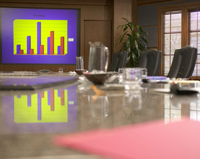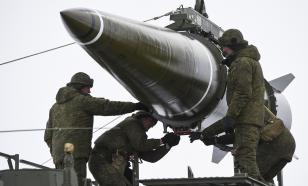US economy puts end to slump
The economy popped out of its rut this spring and grew at the strongest pace in more than a year, giving President Bush something to crow about.

The best barometer of the country's economic fitness - gross domestic product - increased at a 3.4 percent annual rate in the second quarter, the Commerce Department reported Friday.
Businesses regained their appetite to spend and sold more goods overseas, contributing to the improved performance. Stronger government spending also helped out.
Individuals, however, took a breather as they coped with high gasoline prices and the ill effects of the housing slump, including spiking foreclosures and late mortgage payments. The sour housing market continued to weigh on the economy but not nearly as much as it had in previous quarters.
Economic growth in the first three months of the year had slowed to a near crawl of just 0.6 percent, the slowest in more than four years.
At the White House, Bush was quick to hail the rebound in national economic activity. "I want the American people to take a good look at this economy of ours," boasted Bush, whose economic stewardship has received weak marks. "It's an economy that is large, flexible and resilient."
But Sen. Charles Schumer, D-N.Y., called the bounce back "a temporary oasis." He fretted that problems with risky mortgages could drag on and hurt the housing market's ability to recover.
On Wall Street, the GDP report failed to ease investors' fears about housing. The Dow Jones industrial average tumbled 208.10 points on Friday. One day earlier, the index suffered its second biggest drop of the year, plunging by 311.50 points. The culprit: investors' heightened anxiety that troubles in the housing and home-mortgage markets could spread, the AP reports.
Treasury Secretary Henry Paulson called the market turbulence a "wake-up call" to investors to re-examine their degree of risk. The economy's fundamentals, he stressed, remain solid.
"Lenders need to be very aware of the risk. Borrowers need to be aware of risk. I would submit that people are more aware of those risks and the need for discipline today than maybe they were a month or two ago," Paulson said.
Meanwhile, there was also some good news about inflation in the GDP figures. The inflation measure most closely watched by the Fed, the personal consumption expenditure price index, rose at just a 1.4 percent annual rate in the second quarter and was up 2 percent from the second quarter of last year.
Certainly a 1.4 percent inflation rate would satisfy just about everyone at the Fed -- if it were to continue. However, Bernanke cautioned in his recent testimony that ``month-to-month movements in inflation are subject to considerable noise, and some of the recent improvement could also be the result of transitory influences.''
So what do we have? Growth very much in line with Fed expectations, and good though hardly definitive signs that inflation may be dropping back below the 2 percent level that is the upper limit of what some Fed officials regard as acceptable.
Neither development gives Fed officials any reason to want to cut rates any time soon. At the same time, conditions in the labor market remain a strong reason not to.
Along with new estimates for the second quarter, the BEA also released revised figures for 2004, 2005 and 2006 that showed GDP grew an average of 0.3 percentage points a year less than previously reported.
Those revisions suggest that productivity -- output per hour worked -- also grew less rapidly. That may indicate that the economy's potential to grow without overheating probably isn't as great as has been thought.
In 2005, for example, GDP growth of a bit more than 3 percent was fast enough to cause the U.S. jobless rate to fall slowly. Since last fall, just a 2 percent growth rate has been enough to keep unemployment at a low 4.5 percent level, Bloomberg reports.
Source: agencies
Prepared by Alexander Timoshik
Pravda.ru
Subscribe to Pravda.Ru Telegram channel, Facebook, RSS!


